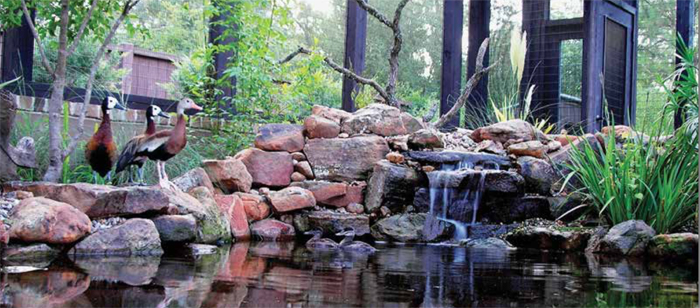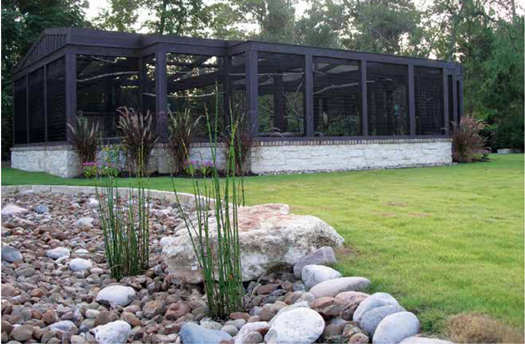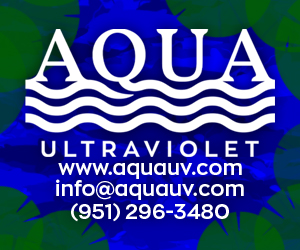
The best customer is a previously satisfied customer. I once assisted a gentleman with the aeration of an existing 125,000-gallon, earthen-bottom pond. As his pond developed, he developed an affinity for ducks — especially hybrid diving ducks. As he attempted to raise them, predators were continually raiding the nests and destroying their habitat. He approached me to build a structure with a pond inside to hatch his ducklings in safety.
### Main Challenge: Nutrient Remediation ###
One thing we all know about ducks, geese and waterfowl: whatever goes into them eventually comes out the other end. The amount of phosphorous and nutrients these birds put out can be uncanny, and for this project an enormous bog filter would be required to handle them. Even multiple biofall-style units would not be able to keep up with the material that would need to be digested. There would not be room in the enclosed area for the size of the bog filter required. I spoke with as many other experienced pond builders as I could. It was obvious that I was in uncharted territory for the most part. I knew I would need massive biological activity to digest the nutrient load. Since I could not make the bog filter as large as necessary due to space constraints, I decided to make the entire pond a biological reactor.### The Solution: Undergravel Filtration ###
After speaking with Eric Triplett, (also known as The Pond Digger) and Mike White of White Water Filters, I chose to go forward with an undergravel filtration system. Both Triplett and White have been successful with the design and implementation of UG filtration.

Mike White designed the system using a grid of two-inch PVC laterals on 12-inch centers, with three holes of three eighths of an inch — two at 30-degree angles and one straight down — every 12 inches on the underside of the pipe. This would allow for suction every square foot on the floor of the pond. Halfway on the suction side, the PVC of the trunk line would be increased to three inches to keep flow friction to a minimum.
Once the laterals were in place, rounded gravel between five-eighths and three-quarters of an inch in diameter covered the PVC to a depth of two inches. The pump I used was an external half-horsepower PerformancePro Artesian with three-inch suction line. An Atlantic Water Gardens external skimmer tied into the suction line to remove any feathers or other top debris. The discharge line was manifolded into two two-inch returns. The first return discharges into a small up-flow bog that spills over a Texas Moss Rock waterfall, and an Aquascape Snorkel and Centipede Module makes cleanout of the bog a snap.

### Nutrient Uptake ###
Kelly Billings of Maryland Aquatic Nurseries emphasized at a previous seminar that in order for plants to remove nutrients effectively, the water needs to flow around the roots, not just stagnate in their region. Hence, the second return flows into a series of perforated pipe, covered in gravel and heavily planted with aquatic plants. This area is sloped, forming a “beach entry” that not only allows excellent nutrient remediation by the plant roots, but also gives the hatchlings means to enter and exit the main pond. To assist in combating the waste matter, water garden pellets by Great Lakes Bio Systems deliver enzymes, bacteria and trace minerals in a 1-2-3 punch to break down the duck waste. We installed a Jandy three-way valve for the homeowner to use to divert the pond water to the larger earthen pond. This allows the nutrients in the water to be physically reduced on a weekly basis. An auto-fill replenishes the pond water as the homeowner adds de-chlor and water garden pellets.
### The Results ###
After combining good turnover rate, plants, high biological activity and enzyme and bacteria treatments, the duck owner with a unique need for his hatchlings is now a satisfied customer. Everything is just ducky!


